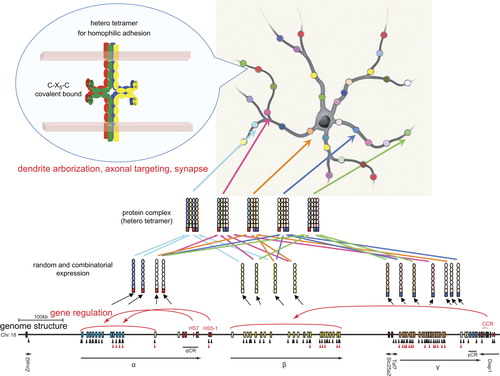Figures & data
Figure 1. Neuronal individuality determined by the random and combinatorial expression of clustered Pcdh members and the random production of heteromultimeric cis-tetramers. From each clustered Pcdh allele, about 10 α, β, and γ members are randomly expressed, and 5 “C” members are constitutively expressed. The random expressions are regulated by the cis-elements HS5-1 for the Pcdh-α cluster and CCR for the Pcdh-β cluster; the CCR is located downstream from the Pcdh-γ cluster. The random expressions are also regulated by the trans-factors CTCF and cohesin-SA. Black and red triangles show CTCF-binding and cohesin-SA-binding sites, respectively. The expressed Pcdh member proteins form random heteromultimeric cis-tetramers. The C-X5-C motif, which is important for forming the cis-tetramers, is conserved among all the clustered Pcdh and nonclustered Pcdh-δ2 members. The heteromultimeric cis-tetramers can bind homophilically between cells. Genetic analyses in mice suggested that these interactions influence dendritic arborization, axonal targeting, and synaptogenesis. This figure is modified from CitationYagi (2012).
